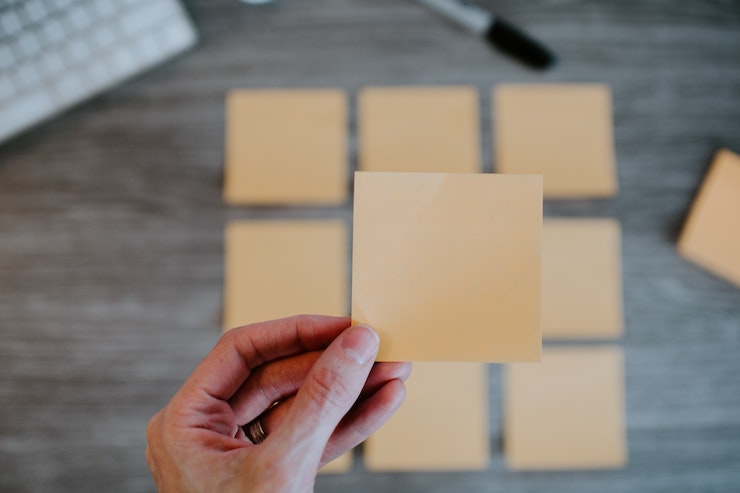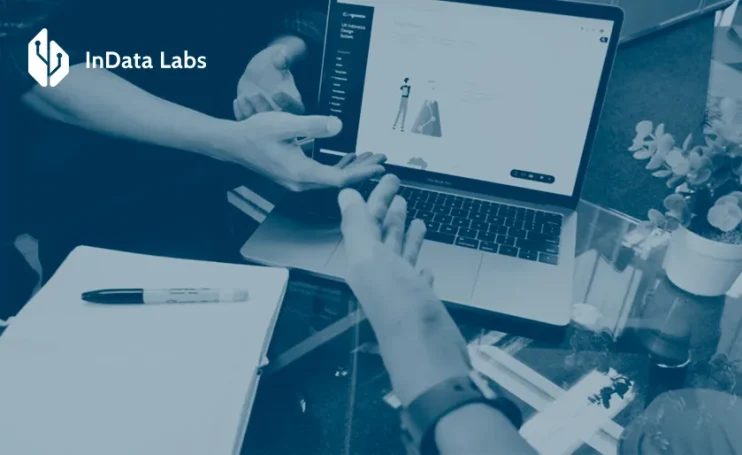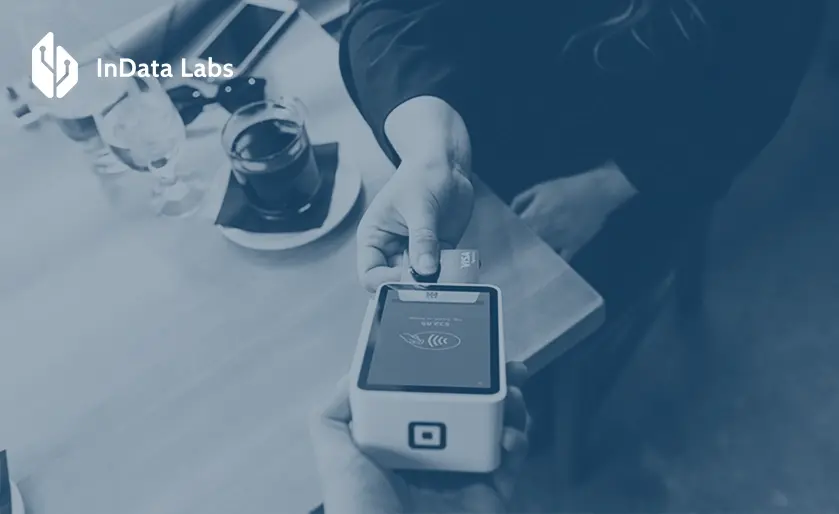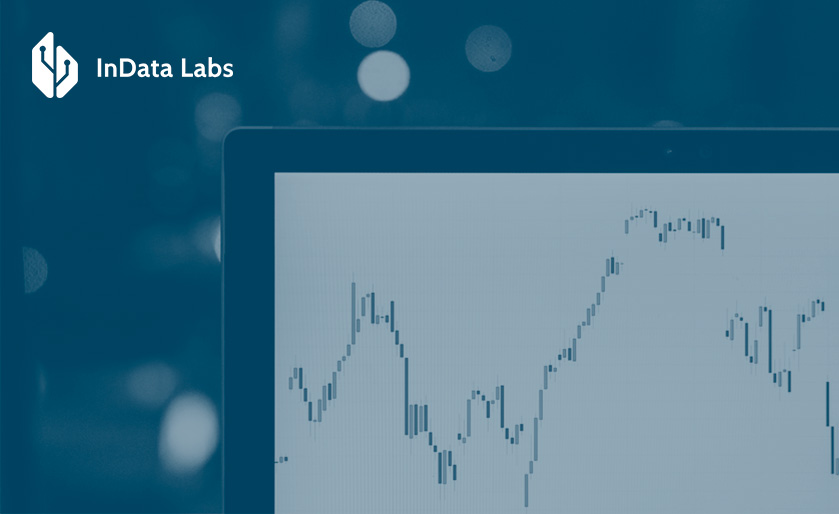How can predictive analysis be used in a business is the question that many business executives have sought for in recent years. Thankfully, the answer is clear now. Predictive analytics is one part of business analysis that looks to learn from past behaviors to predict the future’s likeliest behavior. A typical example of predictive analytics models is seen in loan applications. Financial institutions assign credit scores using predictive analytics. The data from previous financial services are used to predict future transactions. People that don’t miss out on loan repayment get higher scores because the statistical models will indicate that they are likely to repay future loans.
In short, predictive analytics insights offer to find associations, recognize patterns, discover relationships, forecast trends, etc. This makes it easier to make appropriate decisions in anticipation of what is to come in the future.
Unveiling the distinctions: predictive analytics vs. business analytics
Predictive analytics and business analytics are integral fields that intersect within the realm of organizational decision-making. While distinct in nature, these two fields share a fundamental purpose in leveraging data-driven insights.
At its core, with the use of meticulous analysis of both retrospective and contemporary data, predictive analytics focuses on predicting prospective occurrences and patterns. By harnessing sophisticated statistical modeling, machine learning algorithms, and data mining techniques, predictive analytics uncovers valuable patterns, correlations, and insights from vast datasets. Its ultimate objective is to equip enterprises with predictions and probabilistic forecasts, empowering farsighted decision-making. By identifying potential outcomes and trends, organizations gain the ability to foreknow customer demeanor, fine-tune operations, mitigate threats, and make informed, data-driven strategic choices.

Source: Unsplash
On the other hand, business analytics encompasses a broader spectrum of activities that involve delving into and analyzing data to garner perception into various aspects of a business’s performance. It encompasses descriptive analytics, diagnostic analytics, and prescriptive analytics. Descriptive analytics focuses on summarizing retrospective data to yield a well-rounded insight into past events. Diagnostic analytics probes deeply into the data to pinpoint the root causes of defined effects or episodes. Prescriptive analytics takes the analysis further by recommending the optimum response determined by the insights gathered.
While predictive analytics is a subset of business analytics, its main distinction lies in its forward-looking nature. Predictive analysis in business analytics is specifically concerned with envisioning prospective results and patterns, whereas business analytics encompasses a wider scope that includes analyzing previous data, understanding in-the-moment performance, and providing recommendations for future actions.
In the world we’re living in, where data is one of the most valuable resources, organizations recognize the significance of predictive and business analytics in gaining a rivalrous edge. By effectively leveraging data and employing predictive analytics for business advantage, enterprises can make informed decisions, enhance operational efficiency, elevate customer experiences, and ultimately achieve overall growth and success. These tools empower businesses to capitalize on valuable insights, enabling them to stay ahead in the dynamic commercial environment.
Predictive analytics used in business for customer segmentation
Customer segmentation refers to the breaking down of the customer base to smaller groups depending on the similarity between them relevant to marketing. This could be age, interest, spending habits, gender, etc. This way, companies can tailor their marketing messages in a more accurate and personalized manner to increase the customers’ likelihood of buying their products.
Predictive analytics used in business has proven to be better than the traditional strategies for identifying potential customers and improving operations.
Some of the factors that you can use for customer segmentation are:
- Socio-demographic factors.
- Engagement factors.
- Past campaign factors.
Some of the advantages that companies stand to gain are:
- Better communication with customers.
- Cost-effective marketing.
- Higher profitability.
This will ensure that businesses can optimize their marketing campaigns by determining customers’ responses to their marketing campaigns.

Source: Unsplash
CVS Health has launched a groundbreaking call center pilot program aiming to elevate customer engagement. By utilizing state-of-the-art technology, CVS has implemented a revolutionary business intelligence predictive analytics algorithm known as “predictive behavior routing,” which categorizes customers into specific behavior groups.
This novel approach enables call center agents to be assessed based on their performance, ensuring better alignment with customers they can effectively connect with. The pilot program has achieved remarkable results, including reduced call duration and a substantial improvement in call quality. As a result of its success, CVS Health has decided to expand the program into full production. With their commitment to transformative approaches, CVS Health continues to revolutionize customer service and set new standards in the industry by leveraging the power of big data, business intelligence, and predictive analytics.
For instance, customer success teams can reach out to high-risk customers to provide support or gauge what needs may not be being met. This can involve having one-on-one conversations with customers to understand their concerns and address any issues they may be experiencing. Companies can also provide more targeted re-engagement campaigns, such as sending reminder emails or offering special promotions to encourage customers to continue using their products or services.
In addition, to ensure that consumers fully understand how to utilize their goods and services and maximize their value, businesses might develop more targeted customer education content. This can include creating tutorials, webinars, or other educational materials that are tailored to the specific needs and interests of high-risk customers.

Source: Unsplash
Finally, companies can re-evaluate larger company-wide retention initiatives like pricing to ensure that they are competitive and meeting the needs of their customers. This can involve conducting a market research to understand what customers value and are willing to pay for and adjusting pricing strategies accordingly.
The L’Oreal Group is another well-known company operating in the predictive analytics world for business. They are proactively taking steps to enhance customer engagement while also focusing on churn prevention. Despite primarily selling its products through retailers, the world’s largest cosmetics and beauty company recognizes the importance of bridging the gap between itself and its customers.
In pursuit of this objective, L’Oreal has introduced a new customer command center, leveraging CRM technology, to revolutionize its approach. Through this initiative, L’Oreal now analyzes tweets, Facebook posts, product reviews, and news stories, utilizing the insights gained to strengthen customer relationships. Whenever necessary, relevant posts are internally routed to a dedicated command center employee with the expertise to engage effectively with the writer.
By actively addressing customer concerns and feedback, L’Oreal has successfully improved brand awareness and fostered customer loyalty, contributing to effective churn prevention strategies.
Churn prevention as an example of predictive analytics in business
The goal of churn prevention is to predict the customers likely to end their association with the organization, why, and when they should expect it to happen.
This phenomenon is a costly one because it is relatively cheaper to retain existing customers than to acquire new ones. A good example can be businesses working on a subscription-based model. For telecom organizations and SaaS companies, client retention is especially important. They depend on the amount of money they get from clients. Thus, client retention is literally a matter of life and death for them.

Source: Unsplash.com
To keep business afloat, they have to adapt to modern life. So, some of them are becoming digital-friendly. They adopt technology for business data analysis and insight gathering. Because, the more they know about the client behavior, seasonal service purchases, seasonal demand peaks, the better they adapt their businesses to the current situation on the market. Technology helps them analyze huge masses of data, interpret it and plan in advance.
With big datasets of customer info available to the company, the companies can use machine learning (ML) to develop analytical models to act proactively to prevent the churn before they no longer can.
Some of the attributes that you can consider for churn prevention are:
- Socio-demographic variables include age, gender, education level, nationality, marital status, job category.
- Products contracted: insurance policies, credit cards.
- Engagement variables: frequency, recency, monetary.
- Product/service usage: web, mobile, call center, physical.
- Technical incidents: an example is customer service calls.
- Stationary variables: time, date, season.
- Competitor variables: the quality of services, price.
With these, the company can analyze the cause of the churn and take actions necessary to improve customer retention. For instance, they might offer an extra feature or a discount.
Sales forecasting as one of the applications of predictive analytics in business
Predictive analytics used in business can help sales forecasting. Sales forecasting has to do with analyzing the previous seasonality, history, market-shaking events, etc. to get a realistic prediction for the demand for a service or product. Today, a lot of companies both big and small are taking the analytical route. No matter what industry they are in, predictive analytics soothes the pain of manual sales planning. They use data to forecast sales. There can be long term, medium term, and short term forecasting. As a result, executives gain vivid insights for better company performance management and strategic planning.

Source: Unsplash
Predictive analytics software can be used to predict the customers’ responses and their behavioral changes by considering different factors.
Some of the variables that are necessary for sales forecasting are:
- Calendar data: bank holidays, hour, season.
- Weather data: rainfall, humidity, temperature.
- Company data: data from marketing campaigns, promotions, prices.
- Social data: the political and economic factors of the country.
- Demand data: an example is historical sales.
Sales forecasting is a significant part of all of the company’s plans. It helps the company predict the revenue so that they can distribute and allocate its resources optimally.
An example of this is the accurate prediction of power demand within the electric industry. As forecast accuracy gets better, this means that companies have better information which they can use to decide the best thing to do.
A few more examples to go
Walmart initiated the use of a predictive analytics business approach, employing data mining techniques to analyze vast amounts of sales data. Currently, Walmart collects and analyses terabytes of data related to various processes, including those associated with recent hurricanes. This analysis aimed to uncover customers’ preferences leading up to a storm. Walmart utilizes data mining to identify patterns within its point-of-sale data, allowing them to make product suggestions derived from associations between items purchased together or prior to the purchase of a specific product.
A compelling instance of effective data mining at Walmart involves the application of association rule learning techniques. Through data mining, Walmart discovered a significant increase in sales of Strawberry Pop-Tarts by sevenfold before a hurricane. Upon recognizing this correlation, Walmart strategically positions Strawberry Pop-Tarts at checkouts in preparation for hurricanes.
Another noteworthy predictive analytics example occurred during Halloween when real-time sales data analysis revealed that a specific cookie, popular across most Walmart stores, wasn’t selling at two particular locations. The prompt investigation uncovered a stocking oversight that resulted in the cookies not being displayed for sale. Immediate corrective measures were taken to rectify the issue, preventing further sales loss.
Predictive analytics for quality improvement
Amazon is a great example of predictive analytics in retail and E-commerce. The web giant has recently obtained a patent for an innovative predictive ordering technology that takes their service to new heights. This cutting-edge system allows Amazon to place orders for products on behalf of customers even before they have made the purchase themselves. Thanks to their advanced predictive AI, Amazon can now anticipate what consumers want to buy before they even realize it.
Referred to as “anticipatory shipping,” this technology utilizes Amazon’s extensive customer data to proactively identify and fulfill consumer preferences. When these desired items are identified, they are promptly dispatched to a nearby shipping hub, optimizing delivery speed once the orders are officially placed. Thus, It contributes to efficiently applying predictive analytics for business marketing and web shopping experience.
The predictive analytics benefits, in this case, are two-fold. Firstly, customers enjoy an improved shopping experience as they receive the products they desire more quickly than ever before. Secondly, this automated predictive ordering system reduces the workload for Amazon and its employees, streamlining their operations and making the entire process more efficient.

Source: Unsplash
Ford has effectively employed predictive analytics as a valuable tool to drive continuous improvement in the quality of its vehicles. By harnessing the power of data analysis derived from sensors strategically placed along the assembly line, Ford has been able to proactively identify potential issues at early stages, preventing them from escalating into major problems.
This proactive approach has allowed Ford to take prompt corrective actions, optimizing its manufacturing processes and ensuring the delivery of vehicles with superior quality standards. Through the careful analysis of sensor data and the implementation of data-driven insights, Ford has been able to enhance various aspects of its vehicles, including performance, reliability, and safety.
This commitment to leveraging predictive analytics for quality improvement exemplifies Ford’s dedication to delivering exceptional automotive experiences to its customers. With this groundbreaking technology, Amazon continues to raise the bar, enhancing customer satisfaction and simplifying the business side of their operations.
Predictive analytics for risk assessment
With risk assessment, companies can analyze the likely problems that are facing in real-time. There’s just one goal to predictive analytics in business analytics, and it is in building decision support systems that can estimate the company’s profitable operations with some degree of certainty.
The term risk assessment might have different meanings to different people. It is possible to evaluate a customer or a company’s risk, and so on. When it comes to the client, some of the data that the risk assessment might analyze are:
- Socio-demographic factors such as age, gender, marital status, education.
- Product details such as bill statements, credit amounts.
- Customer behavior such as previous payment, repayment status.
For instance, a bank would need more than a buyer’s credit score when determining whether or not to grant a loan. They have to consider driving records, insurance claims, and other factors to know the buyer’s risk.

Source: Unsplash
A mortgage technology company has adopted a proactive approach to dealing with ransomware by developing Autonomous Threat Hunting. This innovative solution utilizes a combination of threat intelligence, predictive analytics, artificial intelligence (AI), and previously identified indicators of compromise (IOC) to detect new compromise indicators and evasion techniques before they can be utilized.
The company emphasizes the proactive nature of threat hunting, asserting that waiting for an attack to occur is not the preferred strategy. Instead, they prioritize exploring and investigating threats even before an attack takes place or malware becomes known.
The implementation of this project has yielded significant benefits. Security operational efficiency has improved by approximately 35%, and there has been a remarkable tenfold enhancement in the early identification of threats. Additionally, the resolution time for new threats has been accelerated by around 60%. This endeavor demonstrates the company’s commitment to maintaining a robust defense against ransomware threats.
Another case of applying predictive analytics for business is predictive analytics in clinical trials and healthcare. Kaiser Permanente, a managed care consortium, has developed a hospital workflow tool that employs custom predictive analytics to identify non-intensive care unit (ICU) patients who are at risk of rapid deterioration. Dr. Gabriel Escobar, a research scientist at the Division of Research and Regional Director of Hospital Operations Research at Kaiser Permanente Northern California, revealed that non-ICU patients who require unexpected transfers to the ICU make up only 2% to 4% of the total hospital population, but account for 20% of all hospital deaths.
To address this issue, Kaiser Permanente created the Advanced Alert Monitor (AAM) system, which utilizes three predictive analytic models to evaluate over 70 factors in a patient’s electronic health record to generate a composite risk score.
Dick Daniels, the executive vice president and CIO of Kaiser Permanente explained that the AAM system examines critical statistics, lab outcomes, and other variables to provide hourly deterioration risk scores for adult hospital patients in the medical-surgical and transitional care units. Remote hospital teams review the risk scores every hour and alert the rapid response teams in the hospital when potential deterioration is detected. The rapid response team conducts a bedside assessment of the patient and adjusts the treatment plan in consultation with the hospitalist. By implementing this system, Kaiser Permanente has succeeded in reducing patient mortality rates.
Conclusion
Predictive analytics uses several techniques such as machine learning, data mining, artificial intelligence, modeling, and statistics to analyze data to predict future events.
The question; how is a predictive analysis used in business now has many answers. Predictive analysis is a sure way to boost results while anticipating future events and taking all the essential steps.
Predictive analytics used in business analytics works across different industries such as telecommunications, banking, E-commerce, energy, and insurance, amongst many others. It comes with various benefits such as fraud detection, optimization of marketing campaigns, improving operations, risk management, etc. And all of these make it very important for a business.
Start your predictive analytics project with InData Labs
Have a question? Contact us at info@indatalabs.com. We’ll gladly discuss the opportunities for cooperation.



